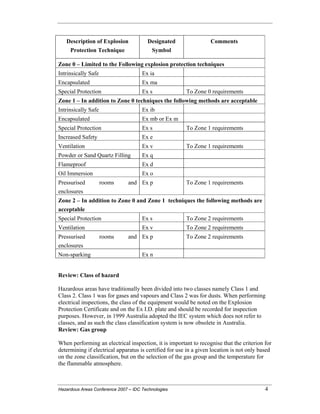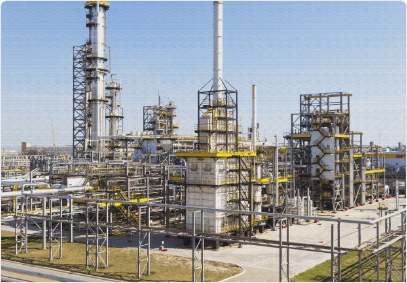Everything about Roar Solutions
Everything about Roar Solutions
Blog Article
The Main Principles Of Roar Solutions
In such an ambience a fire or surge is feasible when three basic conditions are fulfilled. This is frequently referred to as the "hazardous location" or "burning" triangular. In order to secure setups from a potential explosion an approach of evaluating and categorizing a potentially hazardous location is called for. The function of this is to ensure the correct option and setup of equipment to ultimately avoid an explosion and to ensure safety and security of life.

(https://www.wattpad.com/user/roarsolutions)
No tools needs to be installed where the surface area temperature of the devices is more than the ignition temperature level of the offered threat. Below are some usual dirt hazardous and their minimum ignition temperature. Coal Dust 380C 225C Polythene 420C (melts) Methyl Cellulose 420C 320C Starch 460C 435C Flour 490C 340C Sugar 490C 460C Grain Dust 510C 300C Phenolic Resin 530C > 450C Aluminium 590C > 450C PVC 700C > 450C Soot 810C 570C The likelihood of the risk existing in a concentration high enough to trigger an ignition will vary from location to location.
Harmful location electric devices maybe made for use in greater ambient temperatures. Area Repair By Authorised Employee: Challenging screening may not be called for however particular procedures might require to be adhered to in order for the devices to keep its third event score. Each piece of equipment with an unsafe score need to be assessed independently.
The Ultimate Guide To Roar Solutions
The tools register is a comprehensive data source of devices documents that includes a minimum collection of areas to determine each thing's location, technological criteria, Ex category, age, and environmental data. This info is vital for tracking and managing the tools properly within hazardous locations. In comparison, for periodic or RBI tasting evaluations, the quality will certainly be a mix of Comprehensive and Close evaluations. The proportion of Thorough to Close assessments will certainly be figured out by the Equipment Threat, which is evaluated based upon ignition danger (the chance of a resource of ignition versus the likelihood of a combustible atmosphere )and the dangerous location classification
( Area 0, 1, or 2). This variation will certainly likewise affect the resourcing requirements for job preparation. Once Whole lots are defined, you can develop tasting plans based upon the example size of each Great deal, which refers to the number of arbitrary devices products to be inspected. To identify the called for sample size, 2 facets require to be reviewed: the size of the Whole lot and the category of inspection, which shows the level of initiative that ought to be applied( decreased, normal, or raised )to the examination of the Great deal. By integrating the classification of inspection with the Whole lot dimension, you can after that establish the suitable denial standards for a sample, suggesting the allowable number of faulty items found within that example. For even more details on this procedure, please describe the Energy Institute Standards. The IEC 60079 common suggests that the maximum interval between evaluations must not surpass three years. EEHA inspections will additionally be performed beyond RBI campaigns as part of set up maintenance and equipment overhauls or repair work. These inspections can be attributed towards the RBI sample dimensions within the influenced Great deals. EEHA evaluations are performed to determine faults in electric devices. A weighted racking up system is necessary, as a single tool might have several faults, each with varying levels of ignition danger. If the mixed score of both evaluations is much less than twice the mistake score, the Whole lot is considered acceptable. If the Great deal is still considered undesirable, it must undertake a full evaluation or justification, which may trigger stricter inspection procedures. Accepted Whole lot: The root causes of any kind of faults are recognized. If a common failing setting is discovered, added equipment might call for maintenance. Faults are identified by severity( Safety, Honesty, Home cleaning ), guaranteeing that immediate problems are examined and addressed without delay to reduce any kind of impact on security or procedures. The EEHA data source should track and tape the lifecycle of mistakes along with the corrective actions taken. Applying a durable Risk-Based Inspection( RBI )technique is critical for guaranteeing compliance and security in taking care of Electric Devices in Hazardous Areas( EEHA) (electrical refresher course). Automated Mistake Rating and Lifecycle Monitoring: Easily take care of mistakes and track their lifecycle to boost examination precision. The intro of this assistance for risk-based examination further enhances Inspectivity's placement as a best-in-class remedy for governing conformity, along with for any kind of asset-centric assessment usage situation. If you have an interest more tips here in discovering a lot more, we invite you to request a presentation and discover how our service can transform your EEHA monitoring procedures.
How Roar Solutions can Save You Time, Stress, and Money.

In terms of eruptive danger, a harmful area is an environment in which an eruptive environment exists (or might be expected to be existing) in quantities that call for special precautions for the building and construction, setup and use devices. hazardous area electrical course. In this post we explore the difficulties faced in the office, the danger control actions, and the needed expertises to work securely
It issues of contemporary life that we produce, save or manage a range of gases or fluids that are regarded flammable, and a variety of dirts that are considered flammable. These compounds can, in particular problems, form explosive ambiences and these can have major and unfortunate consequences. Many of us recognize with the fire triangle eliminate any kind of one of the three aspects and the fire can not take place, but what does this mean in the context of harmful areas? When breaking this down into its most basic terms it is essentially: a mix of a certain quantity of launch or leak of a particular compound or product, blending with ambient oxygen, and the presence of a source of ignition.
In a lot of instances, we can do little about the levels of oxygen in the air, but we can have considerable influence on sources of ignition, as an example electrical devices. Harmful locations are recorded on the harmful location category illustration and are identified on-site by the triangular "EX" sign. Here, amongst other key information, zones are divided right into 3 types depending upon the risk, the probability and duration that an explosive ambience will certainly exist; Area 0 or 20 is considered the most hazardous and Area 2 or 22 is regarded the least.
Report this page